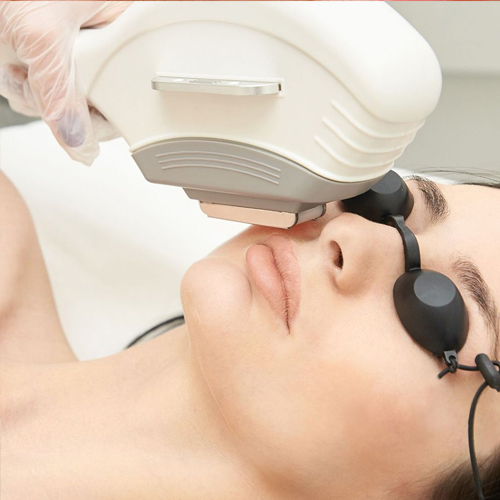Laser hair removal is a popular cosmetic procedure that uses concentrated light beams to remove unwanted hair. It offers a long-lasting solution compared to traditional hair removal methods like shaving, waxing, and plucking. This guide will provide an in-depth look at how laser hair removal works, its benefits, potential risks, and what to expect before, during, and after the treatment.
What is Laser Hair Removal?
Laser hair removal uses a laser to target and destroy hair follicles, inhibiting future hair growth. The laser emits a light that is absorbed by the pigment (melanin) in the hair. This light energy is converted into heat, which damages the hair follicle and delays or prevents future hair growth.
How Laser Hair Removal Works
- Melanin Absorption: The laser light is absorbed by the melanin in the hair, making the treatment most effective on dark hair and lighter skin tones.
- Heat Generation: The absorbed light converts into heat, damaging the hair follicle.
- Follicle Damage: The heat inhibits or delays future hair growth by damaging the hair follicle.
Areas Suitable for Laser Hair Removal
- Face (upper lip, chin, sideburns)
- Arms and underarms
- Legs
- Bikini area
- Back and chest
Benefits of Laser Hair Removal
- Long-Lasting Results: Reduces hair growth significantly, often leading to permanent hair reduction after multiple sessions.
- Precision: Targets dark, coarse hairs without damaging the surrounding skin.
- Speed: Each laser pulse takes a fraction of a second and can treat multiple hairs at once.
- Minimal Discomfort: Most patients experience minimal discomfort compared to other hair removal methods.
- Convenience: Reduces the need for frequent shaving, waxing, or plucking.
The Laser Hair Removal Process
-
Consultation
- Assessment: A dermatologist or licensed technician will assess your skin and hair type to determine if you are a suitable candidate.
- Preparation: You will receive instructions on how to prepare for the treatment, such as avoiding sun exposure and not plucking or waxing the hair for several weeks.
-
Before the Procedure
- Shave the Area: Shave the treatment area a day or two before the session to ensure the laser targets the hair follicle, not the hair above the skin.
- Avoid Sun Exposure: Stay out of the sun for at least two weeks before the procedure to prevent complications.
-
During the Procedure
- Protective Measures: You will wear protective eyewear, and the technician may apply a cooling gel to the treatment area.
- Laser Application: The technician will use a handheld laser device to target the hair follicles. You may feel a slight discomfort similar to a rubber band snapping against the skin.
-
After the Procedure
- Cooling and Moisturizing: The treated area may be cooled with ice packs or anti-inflammatory creams to reduce discomfort.
- Sun Protection: Apply sunscreen regularly and avoid sun exposure to protect the treated skin.
Post-Treatment Care
- Redness and Swelling: Mild redness and swelling are common and usually subside within a few hours to a couple of days.
- Avoid Heat and Friction: Avoid hot showers, saunas, and activities that cause excessive sweating for at least 24 hours.
- Exfoliation: Gently exfoliate the treated area a few days after the procedure to help shed treated hair.
- Follow-Up Sessions: Multiple sessions are needed to achieve optimal results, typically spaced 4-6 weeks apart.
Potential Risks and Side Effects
- Skin Irritation: Temporary discomfort, redness, and swelling are common.
- Pigment Changes: Rarely, laser hair removal can cause temporary or permanent pigment changes in the treated skin, especially in darker skin tones.
- Scarring and Blisters: Though rare, improper laser settings can cause scarring, blistering, or other skin injuries.
Choosing a Qualified Provider
- Certification and Experience: Ensure the provider is certified and experienced in performing laser hair removal.
- Reputable Clinic: Choose a reputable clinic with good reviews and modern equipment.
- Consultation: Schedule a consultation to discuss your goals, skin type, and any concerns you may have.


